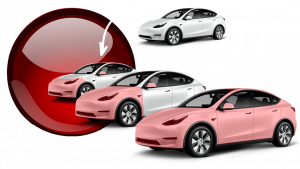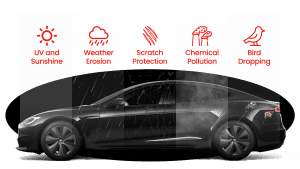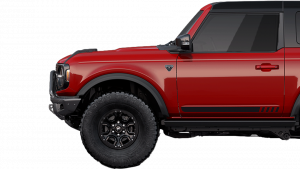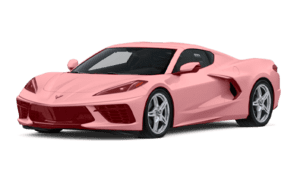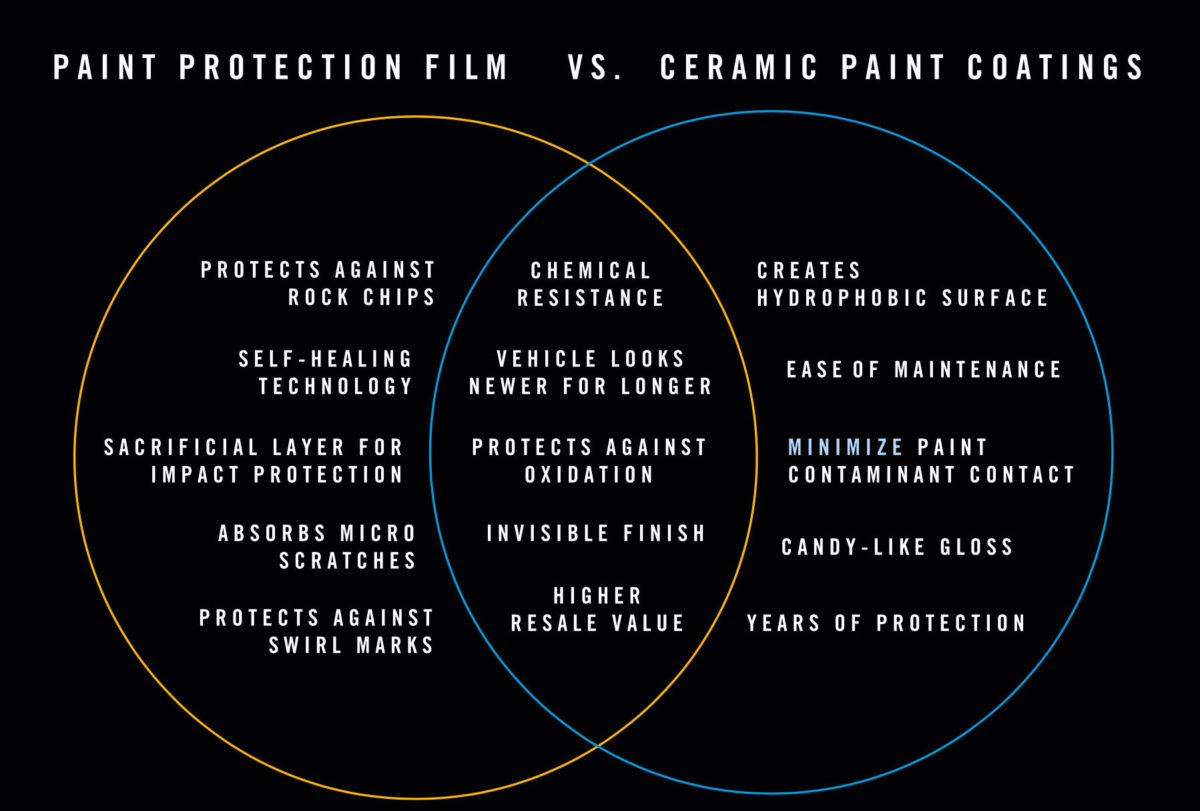As a car owner, you want to keep your vehicle looking as new as possible for as long as possible. You also want to protect your investment. Two popular options for protecting your car’s paint are paint protection film (PPF or clear bra) and ceramic coating. Here are the key differences between these two options:
Material:
 PPF is a clear, thermoplastic polyurethane film that is applied to the exterior of a vehicle, while ceramic coating is a liquid polymer that is applied to the paint of a vehicle. PPF is a film that when applied over the surface of your vehicle’s painted exterior, provides a sacrificial barrier between the car’s paint and external debris or contaminants. Once applied the film is virtually invisible and unless someone gets really close and knows what they are looking for, they won’t be able to tell that the film is there.
PPF is a clear, thermoplastic polyurethane film that is applied to the exterior of a vehicle, while ceramic coating is a liquid polymer that is applied to the paint of a vehicle. PPF is a film that when applied over the surface of your vehicle’s painted exterior, provides a sacrificial barrier between the car’s paint and external debris or contaminants. Once applied the film is virtually invisible and unless someone gets really close and knows what they are looking for, they won’t be able to tell that the film is there.
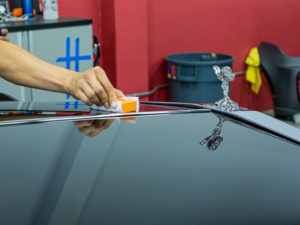
Ceramic coating is a liquid coating that utilizes nanotechnology to provide a completely invisible layer of protection. When applied to the surface, Nanoparticles seal all the pores, making the surface extremely glossy, hydrophobic, and UV resistant. The nano-coating forms a semi-permanent bond with the surface of the vehicle, resulting in a “sacrificial” layer. The ceramic coating contains synthetic protection agents in it. It provides protection from contaminants as well as a shiny, and glossy finish to your vehicle by bonding to the paint.
Level of protection:
PPF provides a higher level of protection than ceramic coating. PPF is thicker and provides a physical barrier between your car’s paint and the environment, protecting it from scratches, chips, and other damage.
Ceramic coating, on the other hand, is a thin liquid layer that hardens to protect against minor scratches and UV damage but does not offer the same level of protection as PPF. Especially against rock chips, and other damage.
Installation:
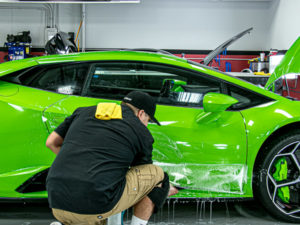 PPF requires skilled professional installation, as it needs to be precisely cut and applied to the vehicle’s exterior. Installation times can vary depending on how much of the vehicle is getting wrapped, and how complicated the vehicle is to do. Installation times can vary from one day to a week or more.
PPF requires skilled professional installation, as it needs to be precisely cut and applied to the vehicle’s exterior. Installation times can vary depending on how much of the vehicle is getting wrapped, and how complicated the vehicle is to do. Installation times can vary from one day to a week or more.
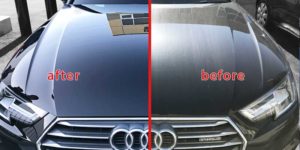 Ceramic coating should always be applied by a professional, it requires a clean and well-prepared surface. All ceramic coatings start out with paint decontamination, and then a minimum one-step paint correction before the ceramic coating is applied to the surface of the paint.
Ceramic coating should always be applied by a professional, it requires a clean and well-prepared surface. All ceramic coatings start out with paint decontamination, and then a minimum one-step paint correction before the ceramic coating is applied to the surface of the paint.
Cost:
PPF is generally more expensive than ceramic coating, due to the material and installation costs. However, it offers better protection and can ultimately save you money on paint repairs and maintenance. It is also the longer lasting option available for protecting the paint. Ceramic coatings will typically need to be reapplied every 3-4 years, and has no warranty. Paint protection film has a 10-year warranty.
So in the long run ceramic coatings will cost more over time than paint protection film will if you plan on keeping the vehicle for 3 or more years.
Maintenance:

PPF requires minimal maintenance, as it is easy to clean and does not require any special care. You can wash the car as you normally would. If using a pressure washer just keep the tip of the nozzle about 3 feet back from the surface of the car.
Ceramic coating also requires little maintenance, but it is important to use the correct cleaning products to avoid damaging the coating. A well-maintained, garage-kept vehicle can expect about 4 years out of the ceramic coating.
In summary, PPF offers a higher level of protection and is better for those who want the ultimate protection for their vehicle. Ceramic coating is a more short-term affordable option that still offers protection against minor scratches and UV damage. Ultimately, the choice between these two options comes down to your budget and your level of protection needs.


